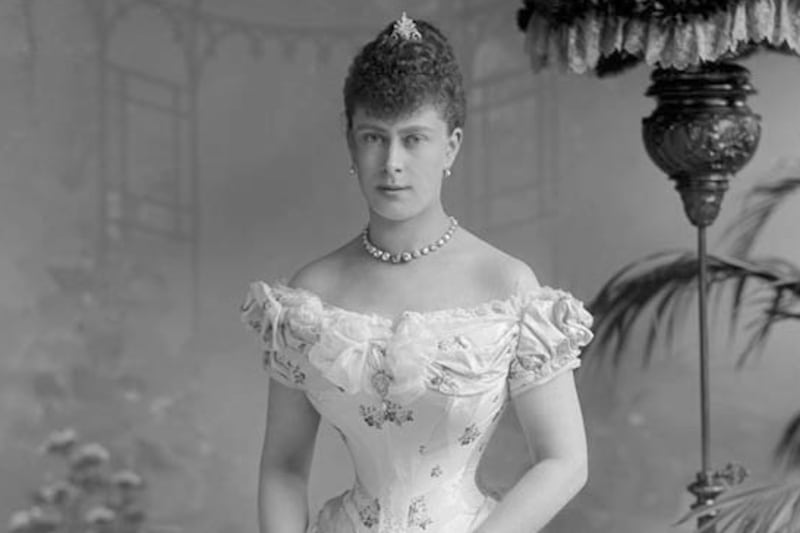I ventured out beyond the western edges of the Dublin Pale on Tuesday night to run a road race: the annual "Bob Heffernan 5k" in a village called Johnstown Bridge. And while we were togging out beforehand, a local veteran of previous editions of the race warned me about the dangers of the massed start.
There and at the first turn, he said, it was easy to get your heels clipped and be sent crashing, whereupon “some people would run over you”.
Then he added, darkly: “It’s a Meath thing.”
Interestingly, the event was taking place in Kildare. I knew this because, when trying to work out where exactly Johnstown Bridge was, and whether you could reach it by public transport, I remembered that my friend Sarah lived somewhere nearby.
The sign of peace – An Irishman’s Diary about GAA fans’ post-match handshake
Royal Threading – An Irishman’s Diary about Carrickmacross Lace
The Empress’s New Clothes – An Irishman’s Diary about Queen Mary and the costs of being a female royalist in 1911
The Quack of Doom – An Irishman’s Diary about WB Yeats, the Sopranos, and wild ducks
After confirming that the nearest bus stop was Enfield, Sarah insisted on picking me up from there and driving me the short distance to the “Bridge”, which is indeed the site of a bridge, over one of Ireland’s several rivers called the Blackwater.
This, as she pointed out with the solemnity of someone who grew up near a peace line, was what separated the “Royals” (including her) from the “Lilies”: a rivalry heightened every summer by the GAA’s marching season, now again approaching.
We laughed at the irony that the English county system, imposed by our former overlords, was so effectively policed by the Gaelic Athletic Association that it now underwrites all of Ireland's tribal identities, and the generalisations that go with them (Kerry people cute, Cavan people tight, Roscommon people prone to sheep larceny, etc).
Then Sarah dropped me off in darkest Kildare, which despite being enemy territory, was also still her neighbourhood.
“We knew Bob Heffernan,” she told me. “He used to have us running up and down hills when we were kids”.
Despite the dire warnings, the race passed off peacefully.
There were no falls, as far as I could see, and nobody – not even from Meath – ran over anyone.
Quite a few ran past me, it’s true, especially in the early stages, when I was holding back a bit in case we bumped into those hills Bob Heffernan ran kids up and down. But there were none of those either, really.
You might think this true of Kildare in general, which is famously flat. On the other hand, had the course not taken a sharp left in the first mile, we could have collided with Carbury Hill, an event of alpine proportions by Kildare standards. There were also some gentle inclines along the route itself. Cunningly, however, the organisers had arranged for all these to be downhill, or so it seemed.
I’ve noticed this before, in Meath as well as Kildare. A running habit leads to intimate acquaintance with the topography of such counties. And both appear to be replete with race loops in which downhill sections are not counterbalanced by uphill ones. This is in contravention of the normal rules of physics. It must have something to do with the Little People. In any case, it makes the races very popular with running tourists in search of PBs (Personal Bests).
As I learned in passing, by the way, Carbury Hill was once the seat of a powerful family called De Bermingham. The De Berminghams’ main local rivals were the O’Connors of Offaly, who they are said to have “massacred under the cloak of hospitality on a number of occasions in the 14th century”.
For a modern reader of that sentence, the question arises as to how many invitations to dinner the O’Connors would have accepted before noticing that guests were not returning.
But in the circumstances, I have no complaints about the cloaks of hospitality – or commemorative T-shirts, as they’re called these days – in Johnstown Bridge the other night.
Yes, by the time I collected mine, they were out of medium-sized ones. I had to make do with a small. Even so, I’m just happy to be alive.
Another piece of history I’ve been reminded of since Tuesday is that today, by coincidence, is the 220th anniversary of the start of the 1798 Rebellion, which broke out in North Kildare.
Events in the West, Ulster, and Wexford subsequently overshadowed it, but some of the fiercest fighting of that summer was in Kildare: Johnstown Bridge being among many battle sites.
Local rebels controlled much of the county at one point. But of course they were overrun eventually. And in that case at least, they could hardly blame it on Meath people.





